
ТП (урок 4)
.pdf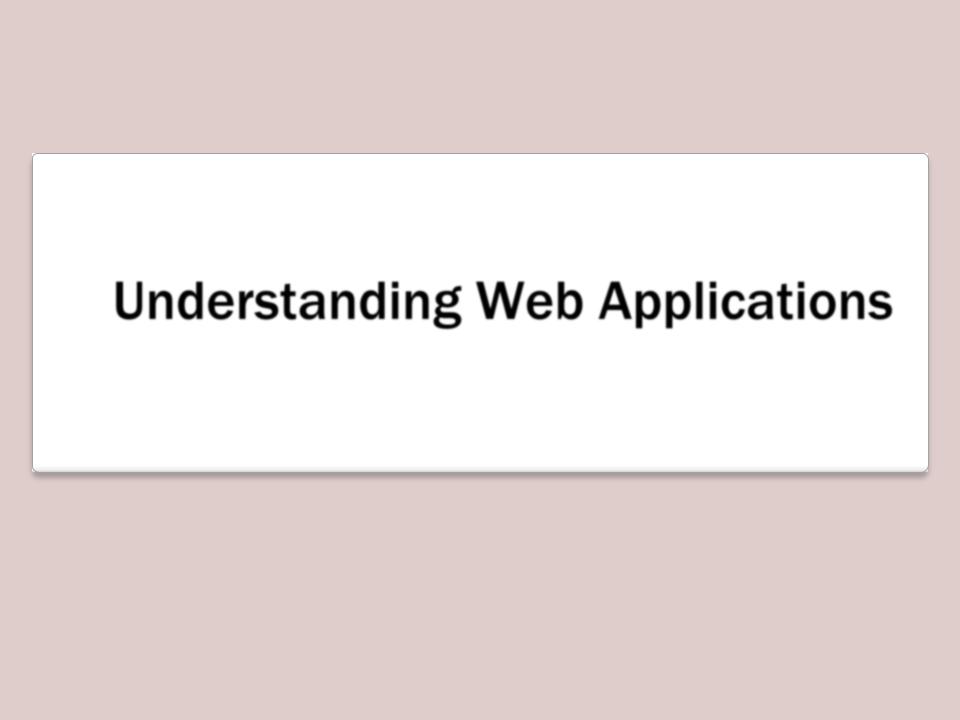
Understanding Web Applications
Lesson 4
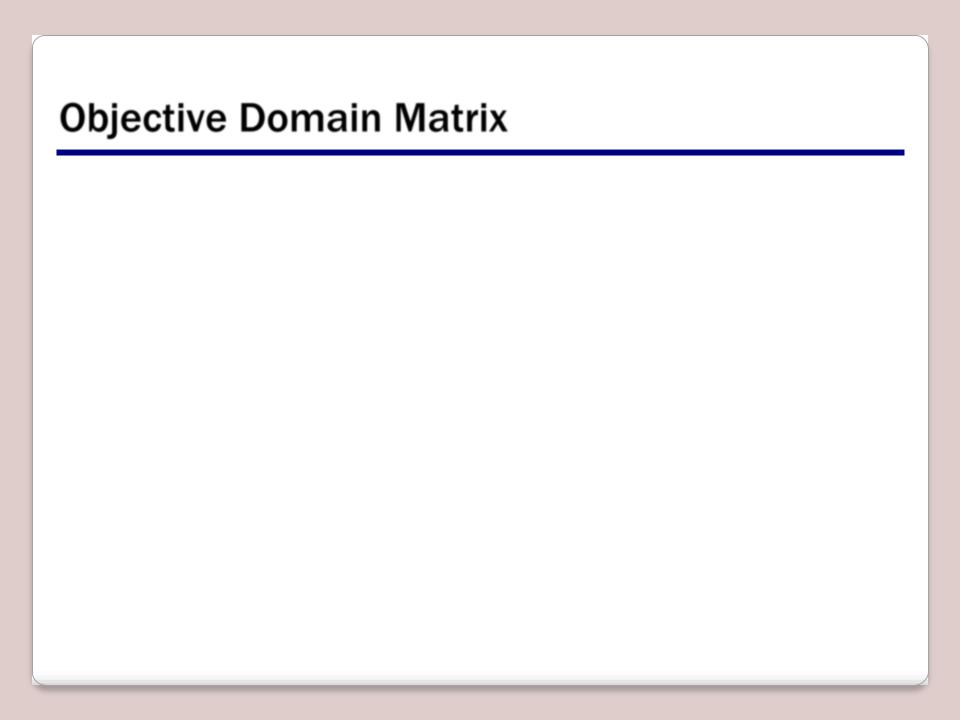
Objective Domain Matrix
Skills/Concepts |
MTA Exam Objectives |
|
|
Understanding Web Page |
Understand Web page development (4.1) |
Development |
|
|
|
Understanding ASP.NET |
Understand Microsoft ASP.NET Web Application |
Application Development |
development (4.2) |
|
|
Understanding IIS Web Hosting |
Understand Web hosting (4.3) |
|
|
Understanding Web Services |
Understand Web Services (4.4) |
Development |
|
|
|
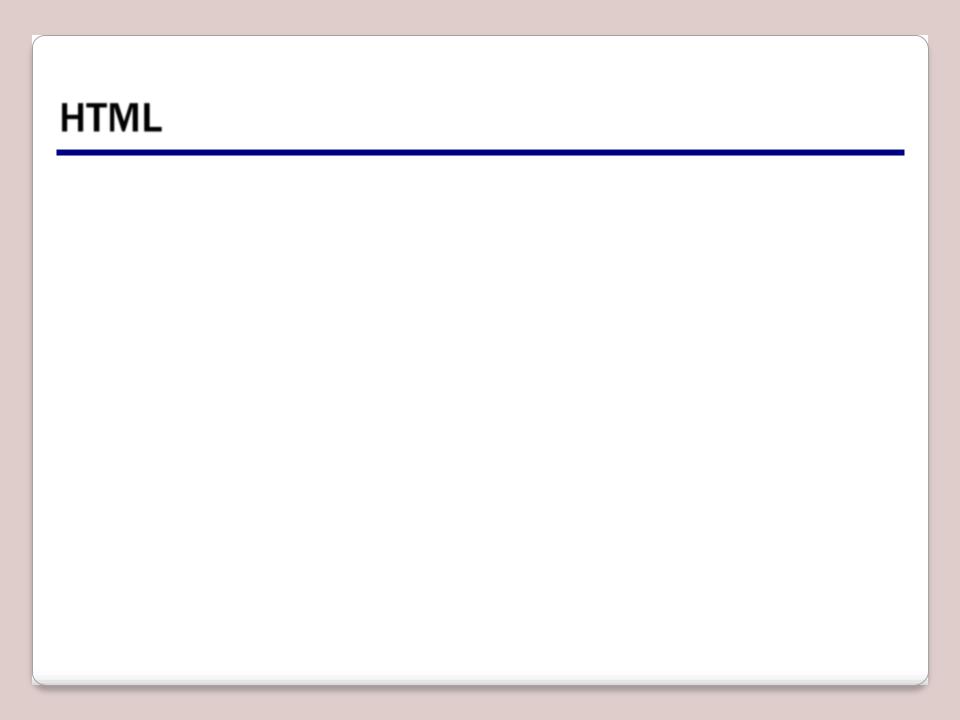
HTML
•Hypertext Markup Language (HTML) is the language used by Web servers and browsers to describe a Web page.
•An HTML page has two distinct parts: a header and a body.
•HTML tags define the structure and content of a page. Each starting tag has a matching ending tag. For example, the ending tag for <html> is </html>.
•The header is enclosed within the <head> and </head> tags.
•The body is enclosed within the <body> and </body> tags
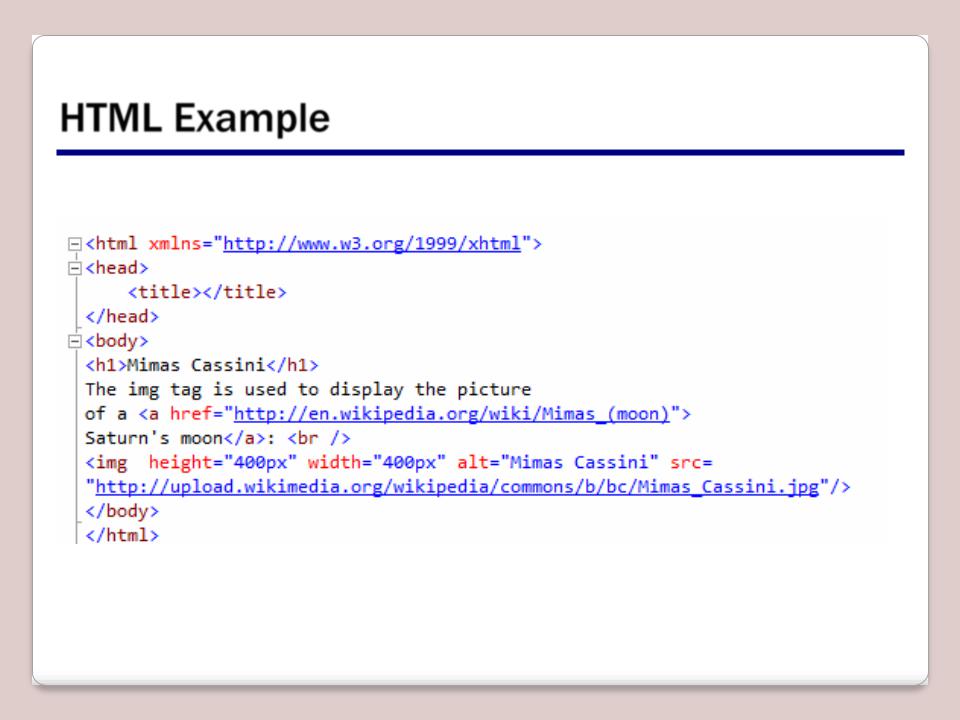
HTML Example
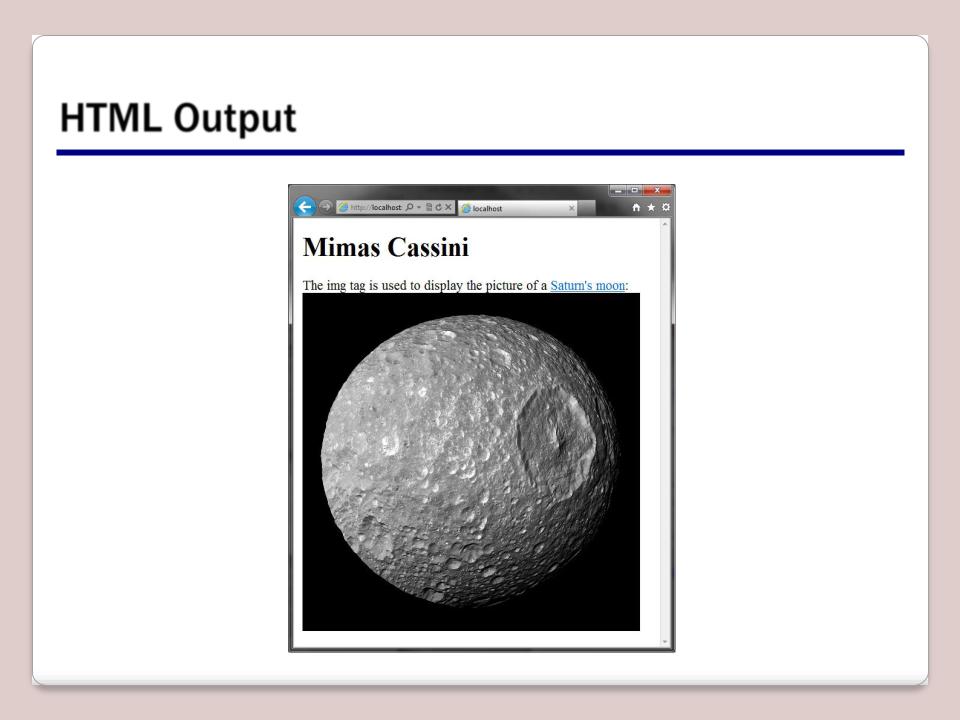
HTML Output
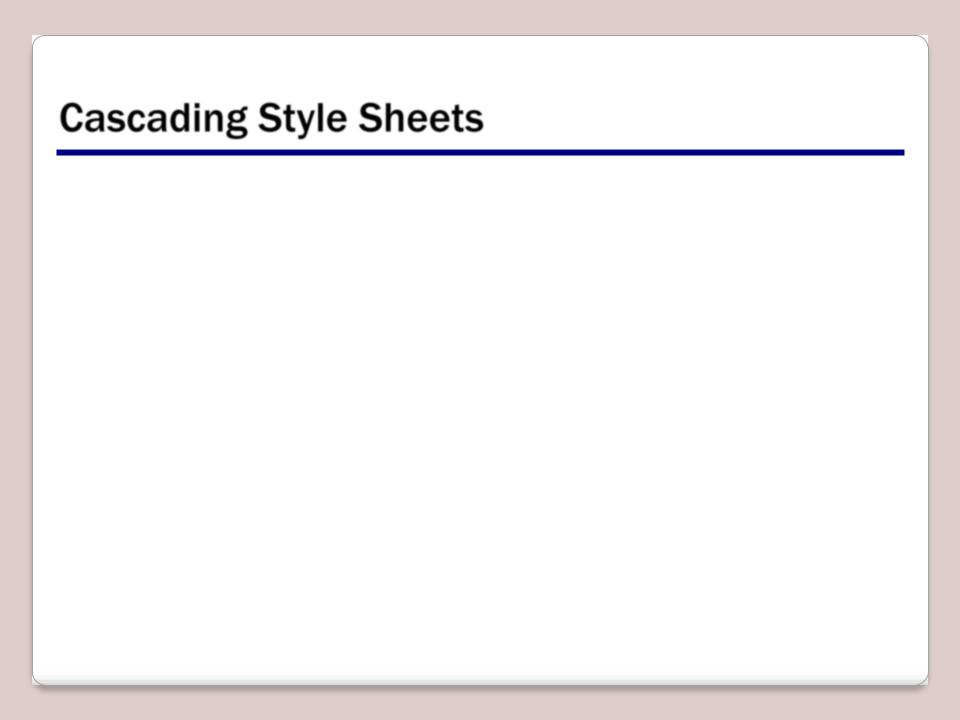
Cascading Style Sheets
•Cascading style sheets (CSS) is a language that describes information about displaying a Web page.
•CSS enable you to store a Web page’s style and formatting information separate from the HTML code.
•HTML specifies what will be displayed whereas CSS specifies how that material will be displayed.
•When used effectively, CSS is a great tool for increasing site-wide consistency and maintainability.
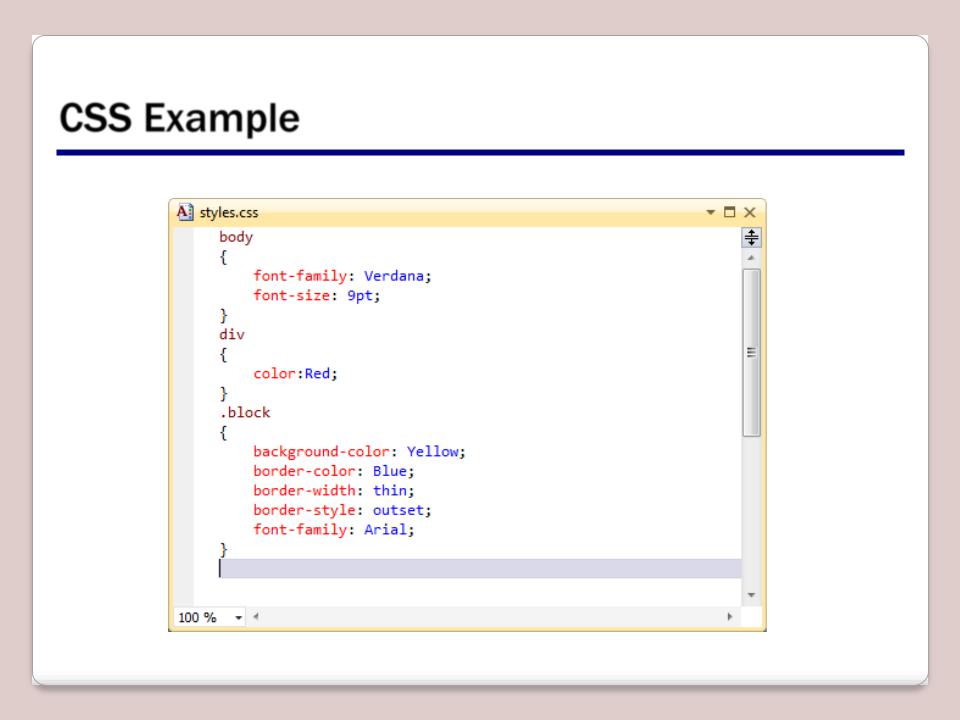
CSS Example
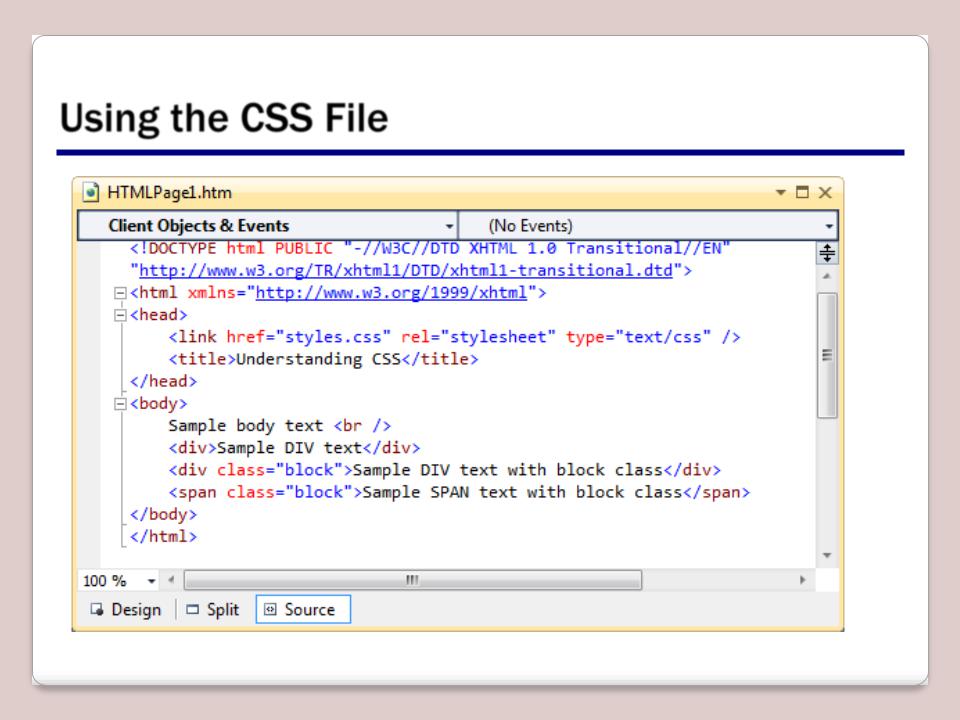
Using the CSS File

JavaScript
•JavaScript is a client-side scripting language.
•JavaScript runs inside Web browsers. JavaScript is supported by all popular Web Browsers.
•Ajax is shorthand for “Asynchronous JavaScript and XML.” Ajax uses JavaScript extensively in order to provide responsive Web applications.
•The ASP.NET AJAX framework lets you implement Ajax functionality on ASP.NET Web pages.

JavaScript Example
